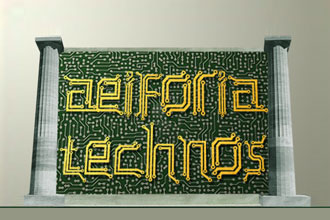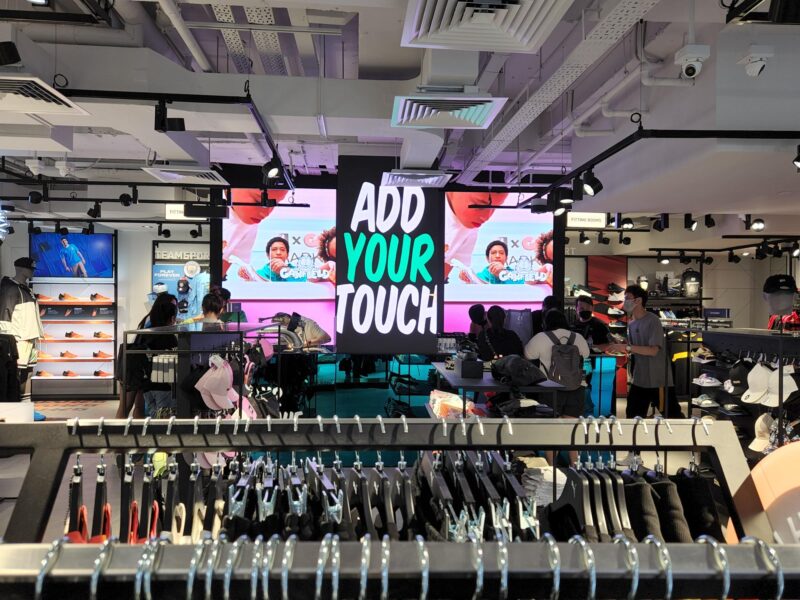Shop ‘Til Ya Drop! (Your Carbon Footprint that its)
 When I first started working in architecture a decade ago, I was employed by a fantastic firm that specialized in a building type we are all familiar with — the retail store. We did everything from big box, to mall core and shell, to tenant fit outs. It was a great fit given that I spent much of my early post-college career years (between theater gigs of course) working in retail sales. Back then I had never given my surroundings much thought. When I moved into designing the spaces however, it became readily apparent how little space these types of clients actually get to shoe horn their store into a given space. Everything had to be maximized from the sales floor, to the stockroom, to the office spaces and more. One of the largest areas always seemed to be the dock where goods came in and empty boxes and wrappers went. Waste management became a critical facet of the process of retail. And by waste management, I mean keeping the dumpster bound for the trash heap packed as tightly as we could.
When I first started working in architecture a decade ago, I was employed by a fantastic firm that specialized in a building type we are all familiar with — the retail store. We did everything from big box, to mall core and shell, to tenant fit outs. It was a great fit given that I spent much of my early post-college career years (between theater gigs of course) working in retail sales. Back then I had never given my surroundings much thought. When I moved into designing the spaces however, it became readily apparent how little space these types of clients actually get to shoe horn their store into a given space. Everything had to be maximized from the sales floor, to the stockroom, to the office spaces and more. One of the largest areas always seemed to be the dock where goods came in and empty boxes and wrappers went. Waste management became a critical facet of the process of retail. And by waste management, I mean keeping the dumpster bound for the trash heap packed as tightly as we could.
I had many jobs within retail including sales, stocking, and even displays — with a brief stint as a morning news announcer for JC Penney during a Christmas holiday. We generated lots of trash and didn’t even think about it. We would simply un-box reams of goods to be shelved, collect damaged and returned goods to be destroyed, and help maintenance dispose of a multitude of light bulbs from their weekly change of burned out fixtures. Later in my retail career, we started to roll out intricate video displays (which seems silly now as they are so commonplace). These displays typically broke quickly as they spent endless hours running and quite often were just left on all night since we were afraid of screwing it up if we turned them off. These too were simply disposed of when they reached the end of their usefulness.
It seems strange to me now and it often makes me wish I had a time machine to go back and point this wastefulness out to my younger self in an attempt to better my working environment. After all, I prided myself on how “green” I was at home. I was raised better. But, now that I am older, wiser and spend a great deal of time thinking about how buildings go together and how not only the building but what happens in the building impacts the environment, I would like to think it is getting better — but maybe it’s not.
We are a consumer culture here in America and that culture is often emulated or aspired to in other parts of the world. We often spend countless hours shopping for perceived “needed” things that will make our lives better. Technology has changed that in many ways not only by being objects of desire such as LED 4K TVs and the latest high density 3D, Blu-ray devices, iPads, computers, Xboxes, and so on, but also by giving rise to e-commerce where we use technology to buy technology (or shoes and purses if you are my wife). One would think that e-commerce would have put a dent on the waste stream of the retailer, but it hasn’t — it has only increased as our desire to own more stuff is inversely proportional to the amount of storage we have to put that stuff (if you know who George Carlin was, then you got that).
So why do we continue to congregate at malls, shopping centers, and big box retailers when we could simply just stay at home with our computer and click shop to our hearts content? There is a community-aspect to shopping and a need to touch and feel what one is plunking down hard earned cash for, especially in this economic climate. Some call it retail therapy. Retailers are savvy to this and have learned how to use all manner of shiny bobbles to attract us to their stores like moths to a candle including the use of high end audiovisual systems.
Retailers, however, feel the pinch of being in a brick and mortar store where they have to staff it, heat it, cool it, stock it and yes — get rid of that waste. It is a perplexing challenge for many retailers as to whether it is worth it. Retailers like Best Buy are a great example of this as they often have publicly complained about people trying the electronics at their store only to go home and buy it on Amazon yet they go on with brick and mortar. They are able to offer something Amazon can’t — on-the-spot personal assistance and advice. But what is in it for them?
Mall owners and developers are stepping up to help defray some of the costs to retailers by making the physical store more appealing. Simon Properties Group, one of the largest property owners in the world, is enticing these retailers through an innovative sustainability agenda. Simon Property is using its properties and logistical might to reduce operating costs for its tenants by testing new solutions in energy efficiency and waste management ranging from the simple low-hanging fruit to the complexity only economy of scale can provide.
Strategies including daylight harvesting and lighting control, telematics for HVAC control, and facility wide energy management systems are helping to reduce the overall footprint while providing an attractive benefit to their retailers. Simon also carries this through by working with the retailers to incorporate ideas into their stores. A great example of this is providing plastic and cardboard recycling on premise where these recyclables are baled and picked up to avoid landfills.
Simon also works hard to attract the sort of shopper who cares for the environment by including things such as electric vehicle charging stations and solar powered cell phone chargers. Retail is often a location when time and money are spent. Having this captured audience and keeping them there and happy has to be a priority. Retail shoppers are noticing too. We now live in a day and age where the average person feels a sense of personal responsibility for the environment and will gravitate to environments where they can feel good about reducing their personal impact. Sometimes they just need a nudge.
Providing this type of environment helps to fuel the socioenvironmental values that have become so wide spread. Leadership by Simon and others like them helps to boost credibility and much needed trust back into businesses. Situations like this will need to address and effectively communicate values that are similar to the potential customer. What is interesting about this is the increase in technology within the shopping environment. The customers expect it so it has to be managed and energy efficient. Consumers expect there to be what we call background tech (i.e., the technology that is there but not for sale). Take kiosks, for instance, or video displays at product end caps. I have been in many stores recently where there wasn’t a cash register, but an iPad with a Square attachment on it. Wayfinding, digital menus in the food courts, and entertainment (live shows and Muzak) all ramp up technology. This tech is in contrast to the eco-conscious ideals of saving on power, but are expected none the less.
So why is this all important to us, the technology guys? We have a role to play in working with companies such as Simon, Westfield Properties, Wal-Mart and many others – that’s providing expertise in managing the data, energy and technology that is pervasive in today’s shopping centers. We are poised to lead them to a unified building control system and help to provide end-of-life opportunities for the large amounts of e-waste that these facilities can generate similar to the strategies they employ to manage plastic bags and cardboard boxes on the docks. We can provide the shiny, bright and flashing video displays, audio systems, control solutions and management that they crave in an energy efficient manner. We can help bring the e-commerce directly to the mall with Near Field Communications (NFC) and RFID technology. We are the experts in technology and we can partner with them to continue to excel and grow sustainably. Do you provide technology to retail clients? We would love to hear what solutions you are offering and how they work to make a more sustainable shopping experience.





